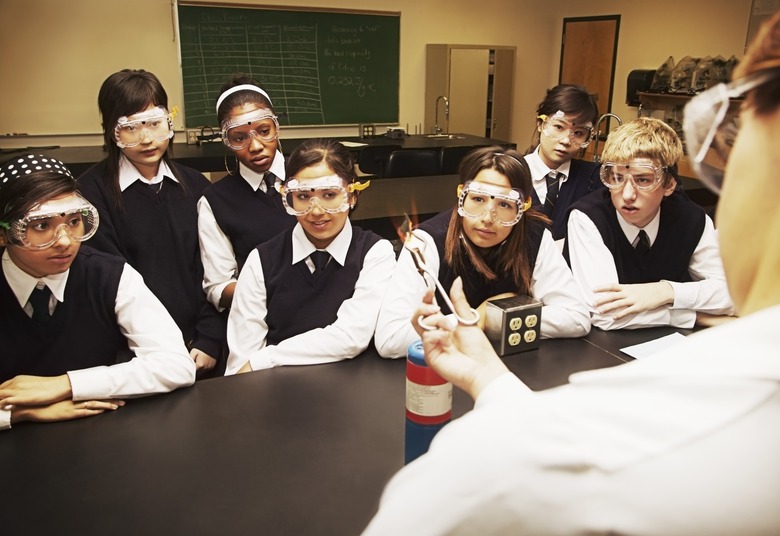Thermal Expansion Science Experiments For Kids
At some point in your elementary education, you probably heard of the basic rule that hot air rises. This is easy to remember, but the reason why may not be. Hot air rises due to thermal expansion, the principles of which can be tested through a number of simple experiments. Thermal expansion experiments are suitable for kids, though experiments that use fire or other heat sources should only be conducted under the supervision of a parent, teacher or other trusted adult.
Dancing Molecules
Dancing Molecules
Temperature is created through the "dancing" of atoms and molecules. When they are exposed to the energy provided by heat, they become agitated and move around, taking up more space than if they were still. This can be tested by applying heat underneath a miniature hot air balloon or parachute. When the air's molecules spread out and dance in this way, the air becomes lighter and rises. This is how we can tell that the molecules become agitated when heated.
Ring and Ball
Ring and Ball
Air is not the only thing that expands when heated. Metals undergo thermal expansion as well. For this experiment, you will have to purchase a ball and ring apparatus. The kit includes two screwdriver-like handles. On the end of one is a metal ball. On the end of the other is a ring through which the ball just barely fits. This apparatus is available in science shops as well as online. Insert the ball through the ring. Move it back and forth to show that the ball easily moves in and out of the hole. Insert the ball once more and heat it up with a candle or lighter. Once it is heated, try to remove it from the ring. You will find that the ball has expanded and will not be able to pass through the ring until it has cooled.
Balloon Expansion
Balloon Expansion
Take a balloon and stretch the opening over the top of an empty ketchup bottle. Place the bottle in a container of hot water. Placing a rock in the bottom of the bottle will help weigh it down. Wait a minute or so for the bottle to heat up. You will notice that as the air inside the bottle heats, the balloon begins to expand. This is because the air inside the bottle has expanded.
Balloon and Candle
Balloon and Candle
This experiment is a great follow-up to the basic balloon expansion experiment. Blow up a balloon and tie off the end. Place it above a burning candle and wait for it to explode. The air inside expanded quickly and popped the balloon. Now, blow up another balloon and fill it up part-way with water before you tie off the end. Place the balloon over the candle. It will not pop because the water inside the balloon absorbs the heat. Because the water absorbs the heat, the air does not expand, thus keeping the balloon intact.
Cite This Article
MLA
Evans, Mike. "Thermal Expansion Science Experiments For Kids" sciencing.com, https://www.sciencing.com/thermal-expansion-science-experiments-kids-8320986/. 24 April 2017.
APA
Evans, Mike. (2017, April 24). Thermal Expansion Science Experiments For Kids. sciencing.com. Retrieved from https://www.sciencing.com/thermal-expansion-science-experiments-kids-8320986/
Chicago
Evans, Mike. Thermal Expansion Science Experiments For Kids last modified August 30, 2022. https://www.sciencing.com/thermal-expansion-science-experiments-kids-8320986/
